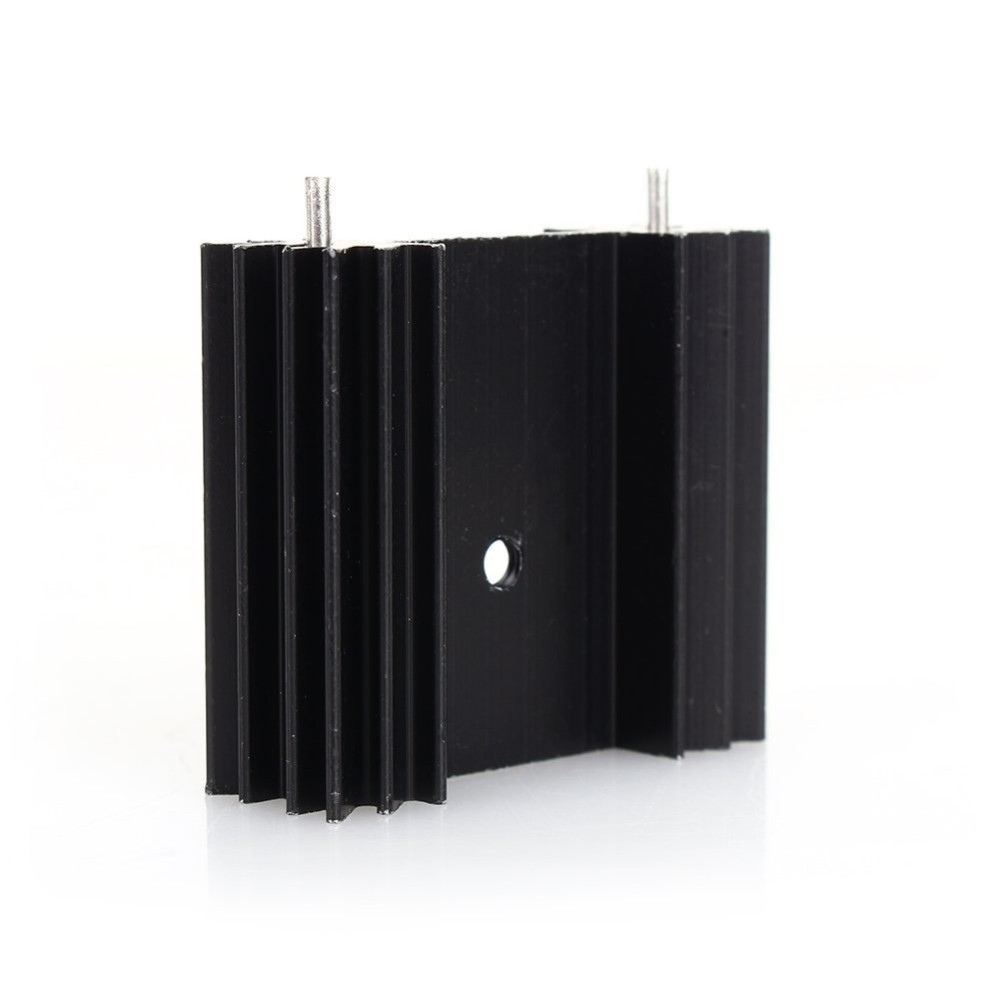

2.jpeg&width=620&quality=80)


2.jpeg&width=172&quality=80)


2.jpeg&width=300&quality=80)
HEAT SINK FOR 7805
Generally used to keep voltage regulators and motor drivers cool, efficient and increases reliability of the components
₹ 19 ₹39
39



| Made In : | India |
Add FAQ
A heat sink for a 7805 voltage regulator helps dissipate heat and maintain optimal operating conditions. The 7805 is a popular linear voltage regulator that outputs a stable 5V, but it can generate significant heat when the input voltage is much higher than 5V or when providing a large amount of current. A heat sink is used to ensure that the regulator doesn’t overheat and maintains its performance and reliability.
Choosing a Heat Sink for a 7805 Voltage Regulator
-
Size and Surface Area:
- Size: The heat sink should be large enough to effectively dissipate heat. A heat sink that is too small won’t be effective.
- Surface Area: The larger the surface area of the heat sink, the more heat it can dissipate.
-
Attachment:
- Clip-On: Some heat sinks come with clips that attach directly to the 7805 regulator.
- Thermal Adhesive: Others may require thermal adhesive or thermal paste to ensure good thermal contact between the heat sink and the regulator.
-
Material:
- Aluminum: Most heat sinks are made from aluminum, which has good thermal conductivity and is lightweight.
- Copper: Copper heat sinks are better at heat dissipation but are more expensive and heavier.
-
Fin Design:
- Heat sinks often have fins to increase the surface area and improve airflow. More fins generally improve heat dissipation.
Installation of a Heat Sink
-
Clean Surface:
- Ensure both the surface of the 7805 regulator and the heat sink are clean. Remove any dust, grease, or debris.
-
Apply Thermal Compound:
- Apply a thin layer of thermal paste or thermal adhesive between the 7805 and the heat sink. This improves thermal conductivity.
-
Attach the Heat Sink:
- Clip-On: If using a clip-on heat sink, carefully align it with the 7805 and press it into place.
- Adhesive: If using thermal adhesive, apply it to the 7805, press the heat sink onto the adhesive, and allow it to cure according to the adhesive manufacturer’s instructions.
-
Verify Fit:
- Ensure that the heat sink does not interfere with other components or circuit elements. It should be securely attached and have good thermal contact with the 7805.
Example Heat Sink Specifications
Here’s an example of a typical heat sink for a 7805:
- Material: Aluminum
- Dimensions: Approximately 25 mm x 15 mm x 10 mm (varies with specific models)
- Attachment Method: Clip-on or adhesive pad
Heat Sink Calculation
To select an appropriate heat sink, you might need to calculate the thermal resistance required. Here’s a simplified approach:
-
Determine the Power Dissipation:
- Calculate the power dissipation in the 7805 regulator: P=(Vin−Vout)×IoutP = (V_{in} - V_{out}) imes I_{out}P=(Vin−Vout)×Iout where VinV_{in}Vin is the input voltage, VoutV_{out}Vout is the output voltage (5V), and IoutI_{out}Iout is the output current.
-
Calculate the Required Thermal Resistance:
-
Use the thermal resistance formula:
Rθ=Tj−TaPR_{ heta} = rac{T_{j} - T_{a}}{P}Rθ=PTj−Tawhere TjT_{j}Tj is the maximum junction temperature (typically 125°C), TaT_{a}Ta is the ambient temperature (e.g., 25°C), and PPP is the power dissipation.
-
Choose a heat sink with a thermal resistance lower than the calculated value to ensure effective cooling.
-
Conclusion
Using a heat sink with your 7805 voltage regulator helps prevent overheating, ensures reliable operation, and extends the life of your components. Selecting the right size, material, and attachment method is crucial for optimal performance.
0 Reviews For this Product









2.jpeg&width=225&quality=80)
2.jpeg&width=225&quality=80)
.jpeg&width=225&quality=80)

